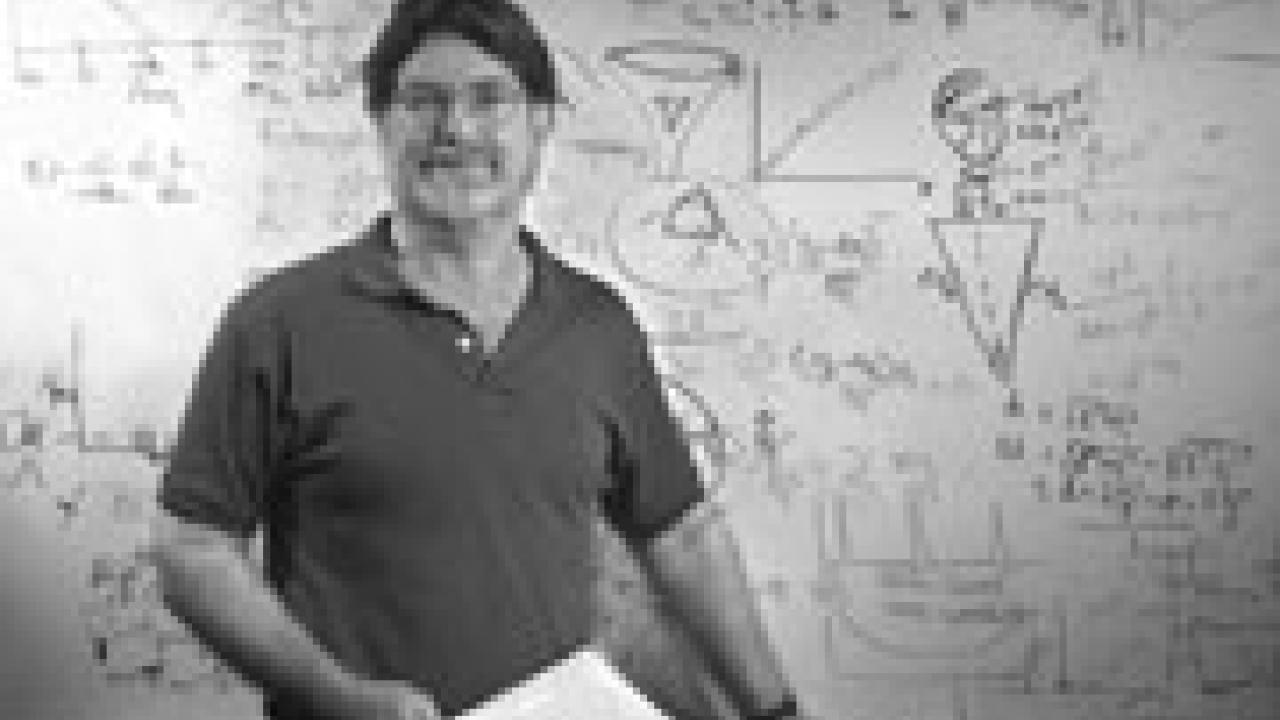This year's Nobel prizes for medicine, physics and chemistry were announced last week, and the results were greeted with congratulations and controversy by campus researchers.
The 2006 Nobel Prize in Physiology or Medicine went to Andrew Fire of Stanford University and Craig Mello of the University of Massachusetts for discovering how RNA interference works. This is a mechanism that plants and animals use to turn off or silence specific genes. It can also be a natural defense against viruses, or could be used to attack cancers, or as a tool for basic research.
In a 1998 paper, Fire and Mello, working with the soil roundworm C. elegans, showed how introducing a piece of RNA, or ribonucleic acid, into a cell could switch off the gene that produced a matching RNA sequence.
William Lucas, professor and chair of the Section of Plant Biology at UC Davis, said he was "shocked" that the award did not recognize the contributions of plant scientists, especially Richard Jorgensen of the University of Arizona and David Baulcombe of the John Innes Center, England. In 1990, Jorgensen's lab published a paper showing that a similar mechanism could control petal color in petunias. At the time, Jorgensen worked at a biotech company in the Bay Area, and also spent time at UC Davis, Lucas said.
"It wasn't known to the level we know today, of course, but the ground rules were all there," Lucas said. "To have not one plant biologist recognized is infuriating."
RNA interference has become a popular technique for research in genetics, because it lets scientists very specifically switch off genes. Lucas' lab is studying how plants use RNA interference as part of the communications system that keeps different parts of the plan — leaves, stems, roots and so on — in touch with one another. That system operates through the phloem network that moves fluids and nutrients around plants, with structures called plasmodesmata acting as gatekeepers for signaling molecules that can carry RNA, as Lucas' group showed in 1993.
Less controversial was the award of the 2006 Nobel Prize for Chemistry to Stanford University's Roger Kornberg, for the structure of the RNA polymerase II, the molecular machine that reads out the genetic code of DNA so that cells can produce proteins essential for life.
DNA is found mainly in the nucleus of the cell, while RNA is found mainly in the cytoplasm of the cell although it is usually synthesized in the nucleus. DNA contains the genetic codes to make RNA and the RNA in turn then contains the codes for the primary sequence of amino acids to make proteins.
"It's certainly well deserved," said Michael Dahmus, professor and chair of the Section of Molecular and Cellular Biology. "Roger Kornberg has contributed greatly to our understanding of the structure and regulation of the transcriptional machinery in eukaryotic cells. Furthermore, it's quite an accomplishment to determine the structure of such a complex multisubunit enzyme as RNA polymerase II."
Transcription of DNA into RNA is a major control point for regulating gene expression and has lots of complex interactions with other pathways. It is key to a wide range of problems in biology, such as growth, development and cancer.
Dahmus' own lab studies how chemical modifications of RNA polymerase II alter its activity during the transcription of DNA into RNA, allowing the RNA product to be processed in different ways.
Nobels are a family affair for Kornberg. His father, Arthur Kornberg, won the prize for medicine or physiology in 1959, also for work on how RNA is made from DNA.
The 2006 Nobel Prize for Physics went to George Smoot of the Lawrence Berkeley Laboratory and UC Berkeley, and John Mather of NASA's Goddard Space Flight Center, for discovering tiny variations in temperature of the cosmic microwave background with the COsmic Background Explorer (COBE) satellite. This result led to a better understanding of the universe after the Big Bang.
This was Berkeley's 20th Nobel prize, a fact that the Bay Area campus did not fail to point out in their press release.
"I still remember when I found out about this detection," said cosmologist Lloyd Knox, professor of physics. "It confirmed in a rough way our understanding of how structure formed in the universe." Knox's wrote his 1995 doctoral thesis on what could be learned from a successor to COBE.
The cosmic microwave background itself, a faint glow of heat remaining from the Big Bang, was detected in 1964, a discovery that won the 1978 Nobel Prize for Physics. But the microwave background appeared to be smooth in every direction, 2.7 degrees above absolute zero. Theorists predicted that in order for stars and galaxies to form, there should be small variations in the microwave background around which matter could condense.
Work on COBE began in 1974, and the satellite was launched in 1989. The results were so significant, Knox said, that a follow-up mission, the Wilkinson Microwave Anisotropy Probe (WMAP) was launched in 2001 to provide finer detail. The WMAP satellite was named in honor of a third key member of the COBE team, David Wilkinson of Princeton University, who died in 2002.
"It was definitely a ground-breaking experiment, and there was speculation that it would win a Nobel Prize," Knox said.
This is the 50th Nobel Prize awarded to a researcher affiliated with the University of California, with most going to UC Berkeley and UC San Diego. UC Davis, UC Riverside, UC Santa Cruz and UC Merced have yet to win Nobel prizes.
The Nobel prizes for economics and for peace were to be announced as Dateline went to press. A date for announcing the literature prize has not yet been set.
Media Resources
Andy Fell, Research news (emphasis: biological and physical sciences, and engineering), 530-752-4533, ahfell@ucdavis.edu
